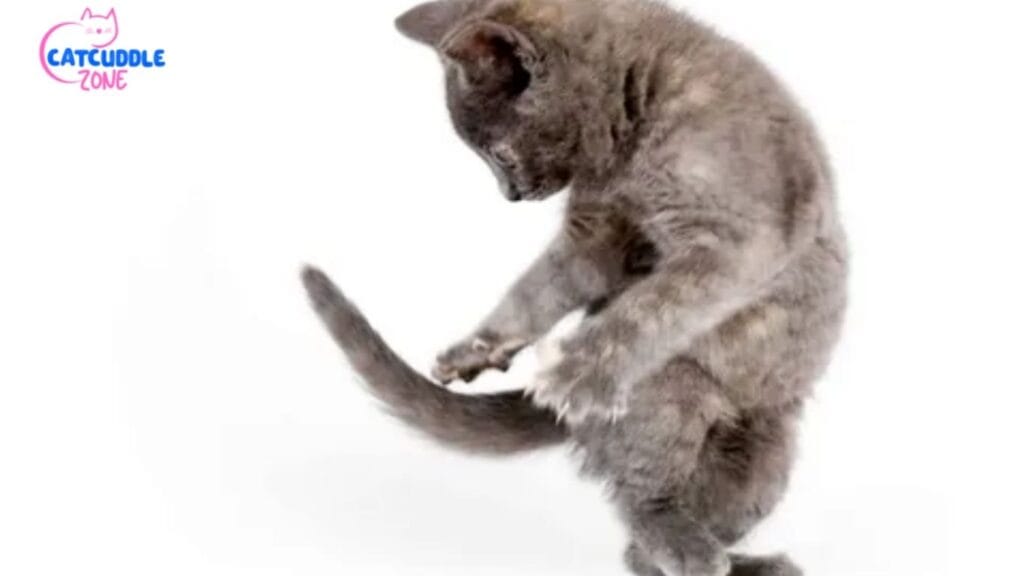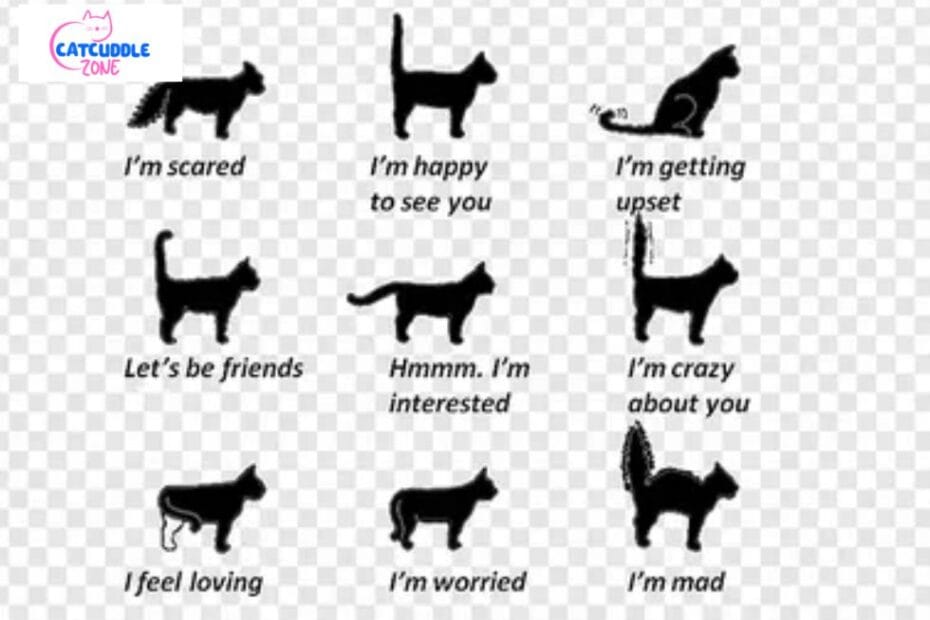Cats may not speak, but their tails tell powerful stories. A flick, curl, or puff can express everything from joy to fear. If you’ve ever wondered about cat tail meaning, you’re not alone. Understanding your cat’s tail can unlock deep insights into their mood and behavior. From feline tail communication to the subtle signs of stress, their tail reveals much more than you think.
Learning to decode cat tail expressions and body movements helps you build a stronger bond with your pet. Whether it’s a tail held high or one tucked low, each position holds a message. This cat tail language guide will help you understand what your cat’s tail is telling you every day.
Why Understanding Cat Tail Language Matters
Behavior is one of the factors that will help a person have a good relationship with your cat. Tail signs reveal to you whether your cat is afraid, happy, interested or angry. All these wordless communication will allow you to avoid fights, bites, or misunderstandings.
Understanding the cat communication cues also aids in safeguarding health of your cat. Many emotional or health issues first appear in subtle body language. Tail signs are one of the first things to change when a cat is in distress or discomfort.
Why Do Cats Have Tails in the First Place?
Cats use their tails for many things. Balance is one of the reasons. Tail assisting in going straight and holding its balance is evident when a cat is able to jump, climb, and run. This applies more to cats that spend time outside or cats that enjoy to climb things which are high.
But tails are more than tools for balance. Tails are vital for cat communication signals. Cats express love, fear and anger among others through tail position and movement. It’s their silent way of speaking, used both with humans and other animals.
Do Cats Have Full Control Over Their Tails?
There is truth that cats are in complete control of their tails. They possess muscle and nerves which enable them to move fast and precisely. Nevertheless, there are a number of movements which are reflexes, as when you do something close the tail base and it twitches.
Tail movement in cats is often very deliberate. You can tell a lot about their mood by how they move it. For example, when you see a cat tail twitching when playing, it might mean excitement or hunting focus.
Common Cat Tail Positions and Their Meanings
Any tail position tells a story. A cat’s tail is straight up meaning the cat feels safe and happy. Your cat will act in this way when you come back home or when you first start the day. When the cat tail was in a question mark position, it means your kitty is playful and in a mood to play.
In the case that your cat is in the scared cat tail position, its tail is held low, or the cat tail is under body. When a cat puffs up its tail it is a sign that the cat is scared or startled. In case you wondered what does it mean when a cat has its tail puffed up, it is warning or scared cat symptom.
| Tail Position | Meaning |
| Straight up | Happy, confident |
| Curved like a question mark | Playful, curious |
| Tucked under the body | Scared, nervous |
| Wrapped around another animal/human | Affection, trust |
| Puffed up | Alarmed, afraid |
| Slowly swaying | Focused, watching |
| Rapidly flicking | Annoyed, upset |
Why Do Cats Wag Their Tails?
Many people ask, “why is my cat wagging its tail?” It is not a wagging of a dog, which is happy. It is most of the time in the form of irritation, interest or frustration in cats. It lies in the pace and the mode of the wag.
Tail whipping among cats implies the cat is aggressive or has been over stimulated. When your cat is sitting down with his/her tail wagging it would be a sign of the slow movement on his/her tail and it might be that he/she was observing the preys or thinking. Rapid wagging could be one of the first signs that something has annoyed your cat thus pay attention to the way you interact with him/her the next time.
Why Do Cats Wrap Their Tails Around You?
When a cat wraps tail around me, it’s a sweet gesture. This movement resembles a handshake or a hug as it is used by cats. It demonstrates that they have trust in you and desire to relate. Other cats would go so far as to curl up their tails around your legs as they rub themselves on your legs.
This form of feline tail communication is often seen when cats greet familiar people. It’s one of the clearest tail signals in happy cats. It’s like they’re saying “I’m glad you’re here.”
Why Do Cats Chase Their Tails?

Cats, especially kittens, sometimes chase their tails out of curiosity. It’s a form of play and helps them learn control and movement. However, adult cats doing it often might signal stress, boredom, or even medical issues.
It should be noted to see whether tail chasing is obsessive or not. It may refer to skin related irritation, fleas, or nerve anxiety to the cat. This behavior can be observed in order to read the behavior of a cat better.
Why Does My Cat Have a Crooked Tail?
In case your cat appears to be born with its tail crooked it could be due to an historical injury, malformed birth, or inherited. Some cats have hemmaphrodism at birth particularly in some breeds. It is usually painless and does not have any movement influence.
However, you need to keep an eye out on such symptoms as limping, swallowing the tail, or swelling. Either of these may be indications of discomfort. The tail is a sensitive part and the centre point in reading cat tails and understand their emotions.
Why Do Some Cats Have No Tails at All?
Some cats are born without tails. Breeds like the Manx or Japanese Bobtail have genetic mutations that cause taillessness. These cats still use body movements and ears to show emotion, though their cat tail language guide is different.
Lack of a tail does not harm their movement or balance much. These cats adapt well and can express emotions using other forms of cat body language tail flick and posture.
5 Fascinating Facts About Cat Tails
Cat tails are full of surprises. Here are some fun facts:
- A cat’s tail contains between 19 and 23 vertebrae.
- Tail quivering in cats often happens when they are excited or marking territory.
- Kittens learn cat tail body language by watching their mother.
- Some cats use their tails like rudders when jumping.
- Tail injuries can affect the bladder and bowel control due to nerve endings.
These facts make it clear why the tail is so vital in understanding feline behavior and health.
Final Thoughts on Understanding Your Cat’s Tail
Learning to read your cat’s tail is like learning a new language. It’s a powerful way to connect deeply with your pet. Every flick, puff, or wag means something—sometimes small, sometimes serious.
So next time your cat swishes its tail, don’t ignore it. It could be showing cat tail signs of fear, joy, love, or irritation. Pay attention and soon you’ll become fluent in cat tail language and emotions. That bond? It’ll grow stronger every day.
Do you have a story about your cat’s tail talk? Share it in the comments. Your insight could help others understand what your cat’s tail is telling you!
Frequently Asked Questions
What does my cat’s tail tell me?
Your cat’s tail shows its feelings, like happiness, fear, or irritation—it’s a key part of feline tail communication.
Why do cats flick their tail when lying down?
Tail flicking often means your cat is annoyed, overstimulated, or closely watching something—it’s a sign your cat is irritated.
What does the cat tail symbolize spiritually?
Spiritually, a cat’s tail can symbolize balance, intuition, and hidden emotions, showing the unseen flow of energy and awareness.
Why does my cat raise her tail when she sees me?
A raised tail means your cat is happy and confident—it’s a friendly greeting saying she’s glad to see you.
